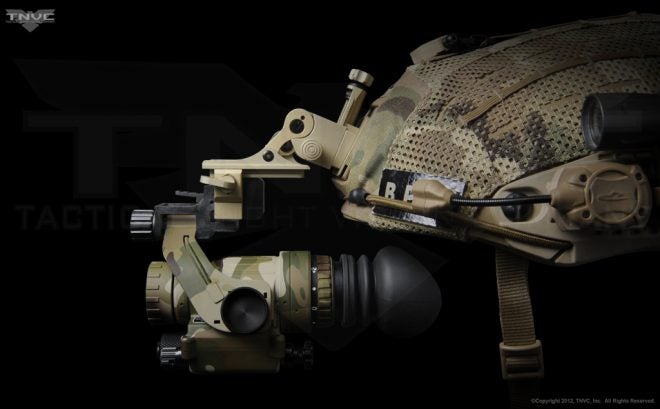
The PVS-14 is the most widely used monocular.
Source: https://tnvc.com/shop/tnvpvs-14-l3-gen3-un-filmed-white-phosphor-2/
When it comes to shooting, you can nerd out in infinite detail about nearly any subject. Whether that pertains to carry ammo, a special purpose AR build, the lumen count of your defensive lights, or the concealability of your weapon, there are many decisions to make. However, it seems that the intricacies and detailed nature of night vision take the importance of even the smallest details to a whole new level.
This presents a substantial barrier to entry when you start looking to buy night vision for the first time. Also, while your group of friends will most likely have plenty of handguns or rifles for comparison, there are far fewer people that own night vision and the purchase ends up being more a ‘leap of faith’ rather than a try before you buy to ensure your investment will live up to your expectations. Due to the high price-tag associated with a quality night vision setup, the more information you are armed with the better decision you can make. This article will assist the first time buyer in better understanding what is available and how to make an informed decision.
Night vision is often broken down by generation and is best categorized by “gens” 0-3. Early generations require significantly more IR illumination. They also lack the clarity and definitions of later generations. For the money, even a gen-2 night vision device does not provide significant cost savings in comparison to the lack of capability it gives up. Some companies will attempt to sell a gen 4. However, this designation has not been established and is most likely just a filmless unit.
When purchasing a tool, much of what influences the buyer’s decision will be based on how the tool will be used. Weapon mounted night vision also exists, but in this discussion, we will focus on hands free monoculars and googles.
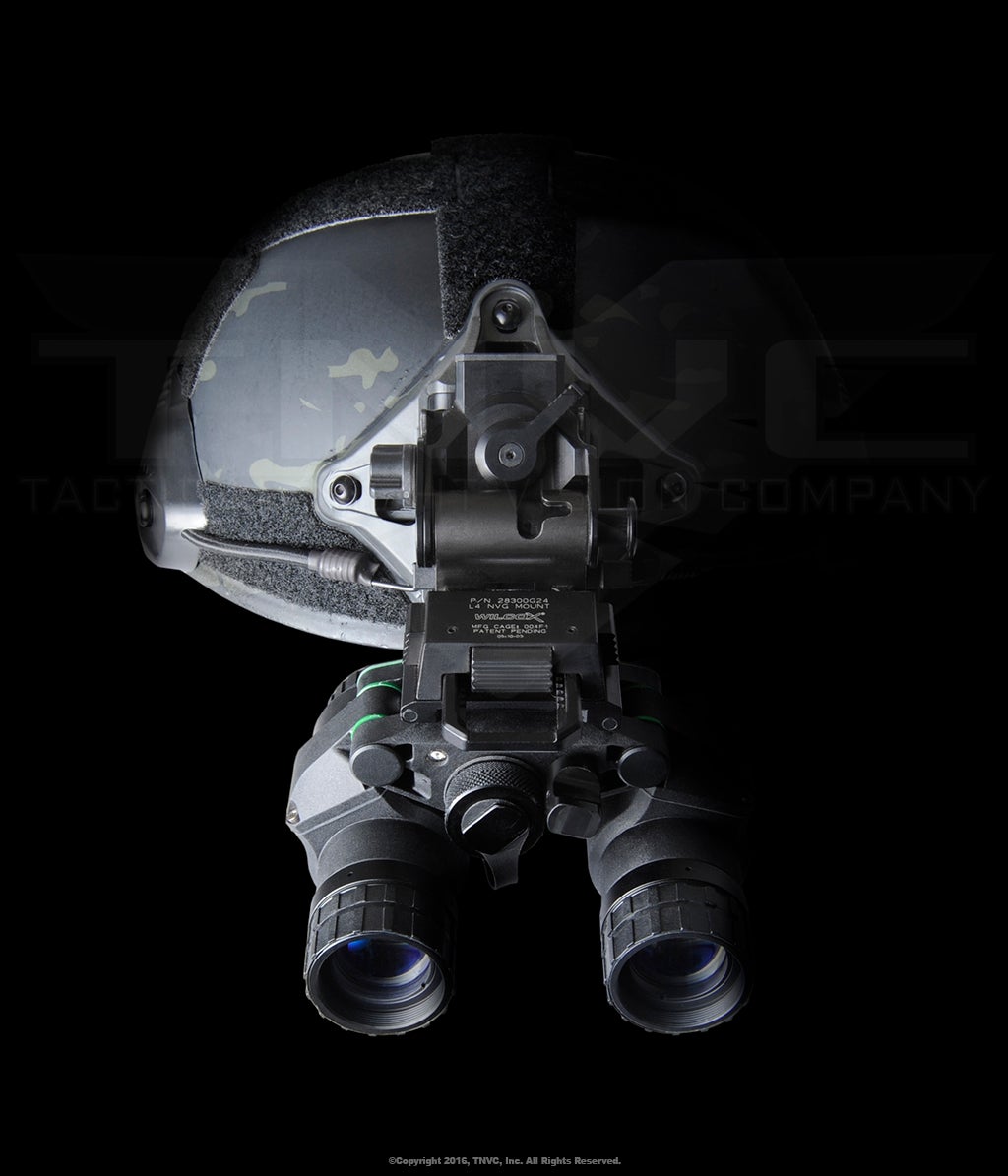
NODs are often mounted to a bump or ballistic helmet to provide hands-free use.
Source: https://tnvc.com/shop/tnvdtnvg-dual-tube-night-vision-goggle/
Some key components of a hands-free setup are as follows:
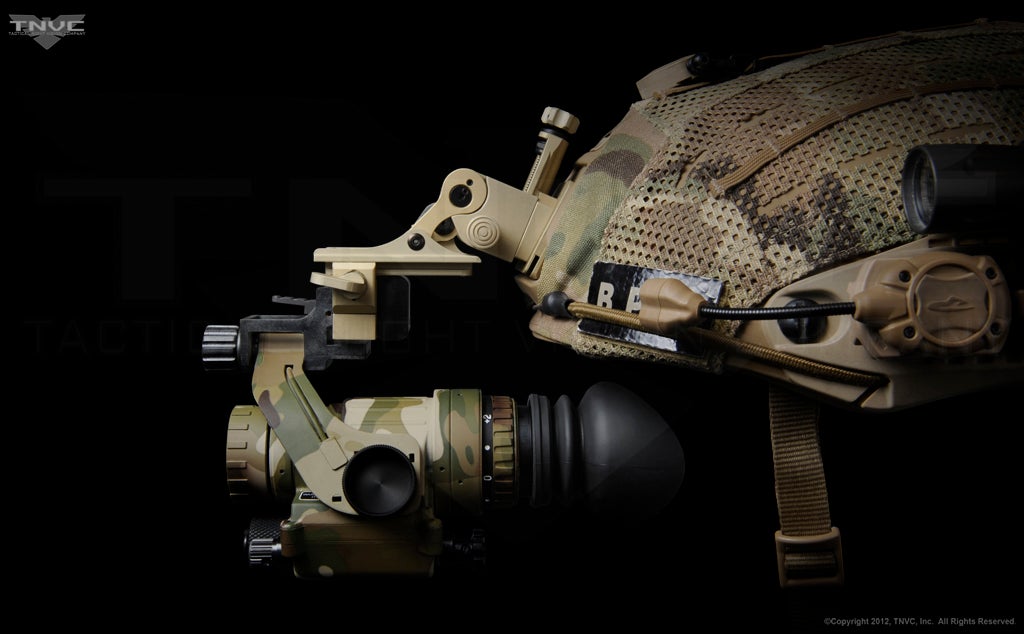
The PVS-14 is the most widely used monocular.
Source: https://tnvc.com/shop/tnvpvs-14-l3-gen3-un-filmed-white-phosphor-2/
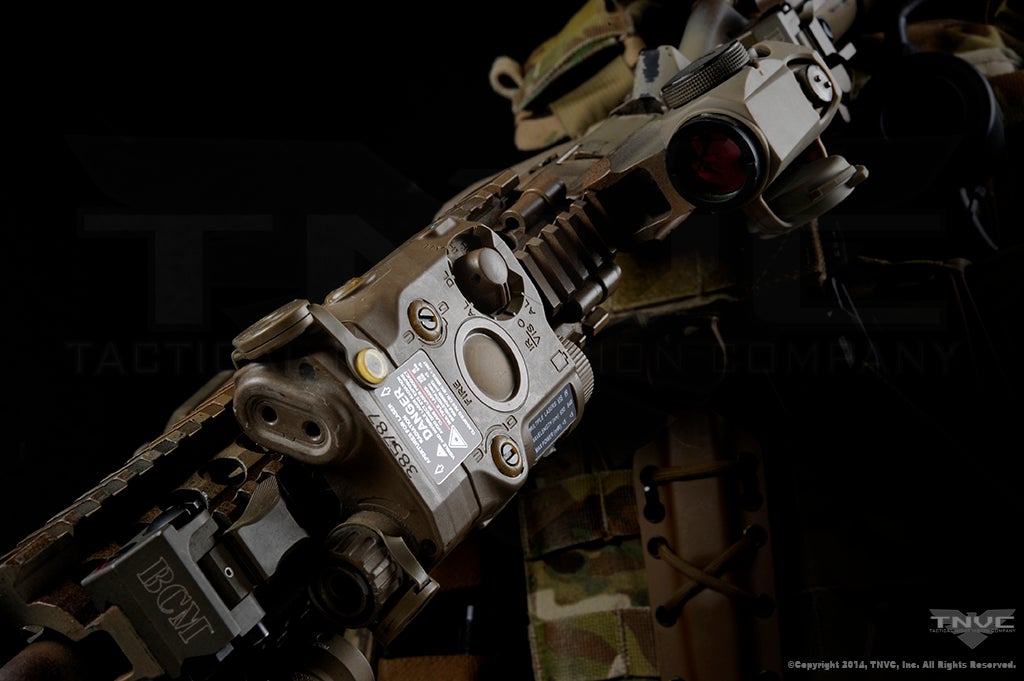
Here is an ATPIAL-C. This is a combination IR laser, visible laser, and IR illuminator.
Source:
https://tnvc.com/shop/l3-insight-atpial-c-class1-ir-laser/
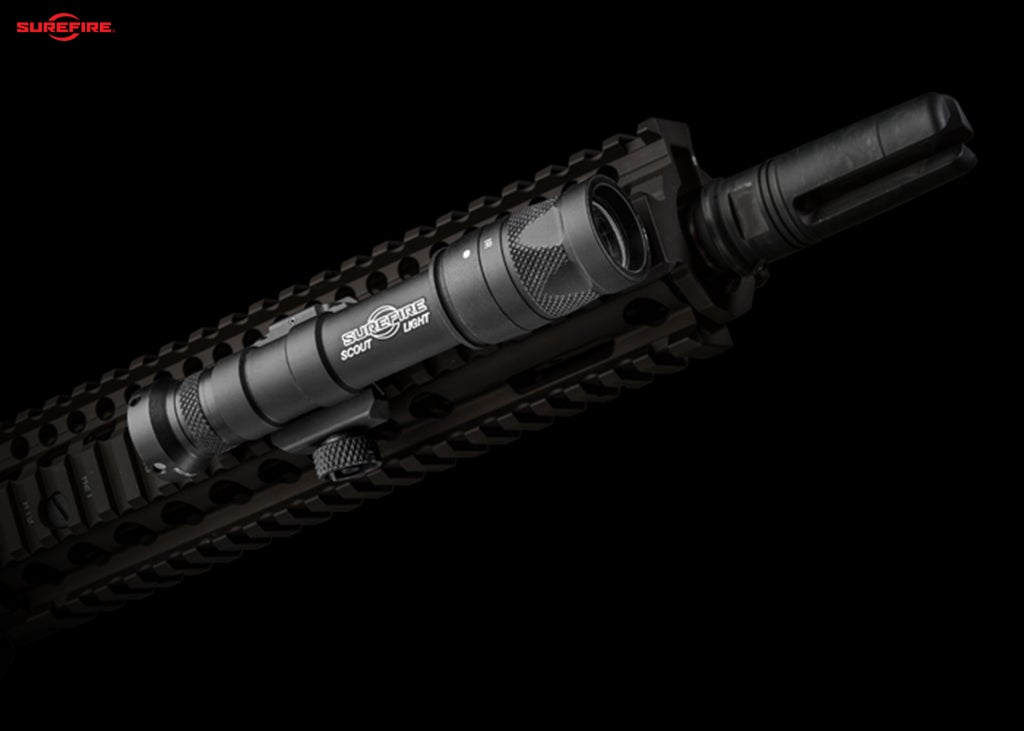
Here is a Surefire Scout light with a Vampire head to allow for IR or white light emission. These are often paired with IR lasers to be used when there is not enough ambient light available.
Source: https://tnvc.com/shop/surefire-m600v-scout-light/
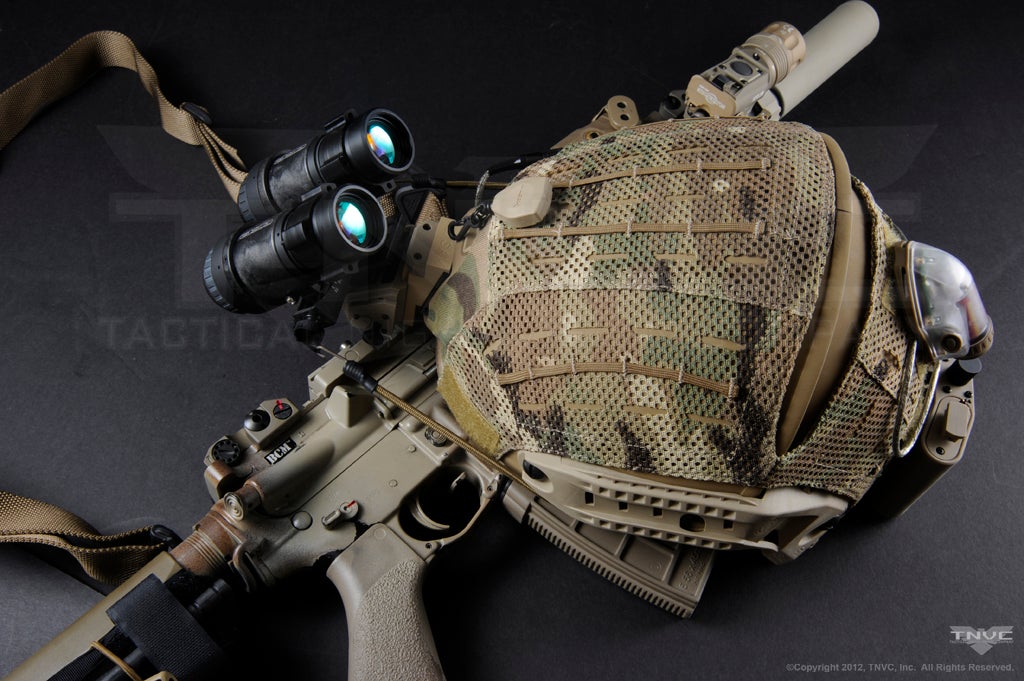
This is a Crye Airframe helmet system for hands-free use.
Source: https://tnvc.com/shop/crye-precision-airframe-ballistic-helmet/
Single Tube
For a basic/starting setup, the new user would most likely start out with an AN/PVS-14. This acronym stands for Army/Navy Portable Visual Search. The AN/PVS-14 is also often referred to as a Monocular Night Vision Device (MNVD).
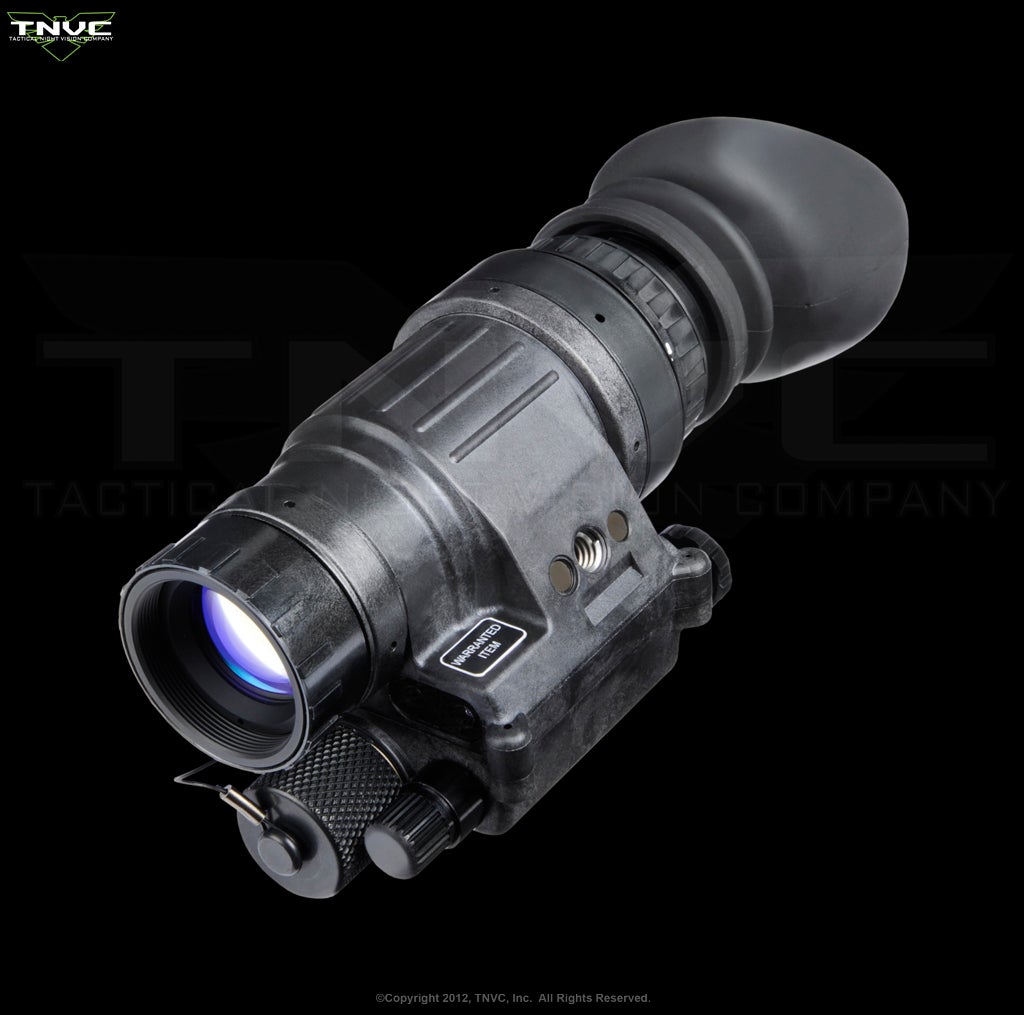
Here is a TNV/PVS-14 Harris Gen3 PINNACLE
Gen3 Auto-gated Night Vision Monocular.
Source: https://tnvc.com/shop/tnvpvs-14-itt-gen3-pinnacle/
Today the technology that is available in many of the highest end setups used by the most elite units can be had in PVS-14s. This technology provides greater image clarity. A decent, base level PVS-14 retails for $3,000 and increases in price based primarily on the image intensifier. If the user wants to go to the next step then they could purchase a PVS-14 with white phosphorous which allows for a brighter image. Due to the fact that the eye can differentiate more shades of green than any other color, night vision was originally used with green phosphorus.

Shown is an example of green phosphorous. Source: https://tnvc.com/shop/tnvpvs-14-l3-gen3-omni-viii/
The new white phosphorous has shown to give plenty of contrast and also provides a 20-30% increase in image brightness. At this step, we are talking about unfilmed white phosphorous. There are other options such as gen 2 white phosphorous and gen 3 filmed white phosphorous. To achieve the greatest image clarity, it is definitely recommended that you purchase filmless white phosphorous. This also should be done through a reputable dealer.
The filmless white phosphorous tubes have the highest specs and are considered to be aviation grade. This incredible increase in capability comes at only an average increase of $850 to $900 increase when purchasing a pvs-14. White phosphorous tubes do take longer for your eye to return to natural night vision. When weighing the pros a and cons, this is a small consideration in comparison with the benefits provided.
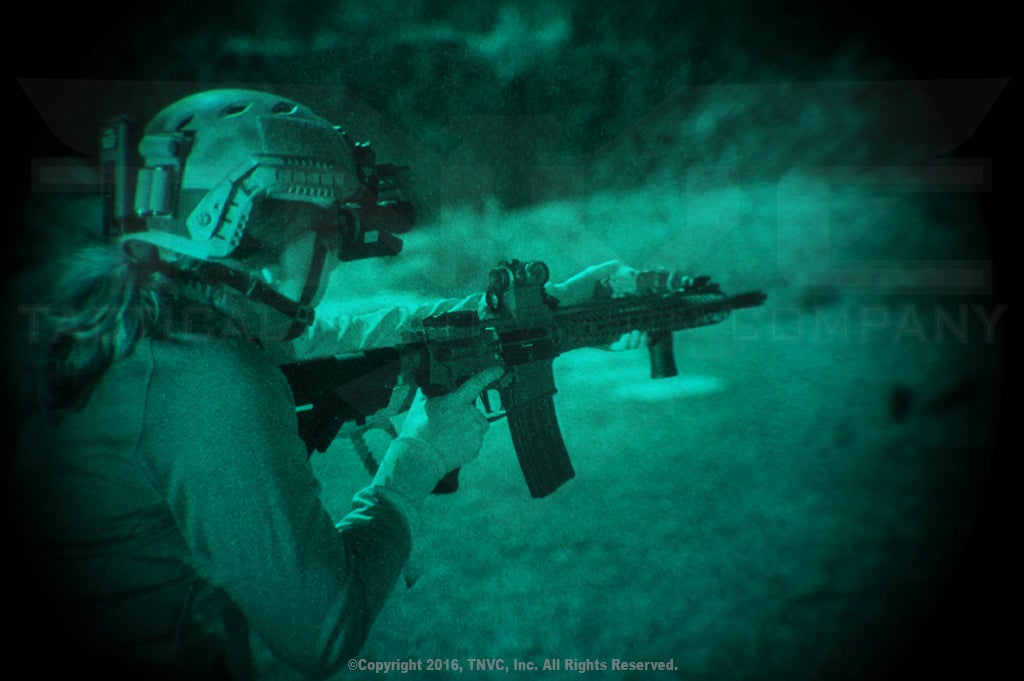
Here we see a white phosphorous image. There is still a green tint but the image is significantly brighter than the standard green provides.
Source: https://tnvc.com/shop/tnvpvs-14-l3-gen3-un-filmed-white-phosphor-2/
Dual Tube
The next step would be to purchase a dual tube setup such as a pair of sentinels. These can be purchased in the standard green phosphorous and most often use the OMNI VIII standard military tubes. These also can also be upgraded to the filmless white phosphorous tubes. Two of the top tube makers that are often sought after are tubes by L3 or by ITT Harris. The major benefit to the Sentinel system is their rugged durability. The housing is made from machined delrin, as opposed to an injection molded plastic.
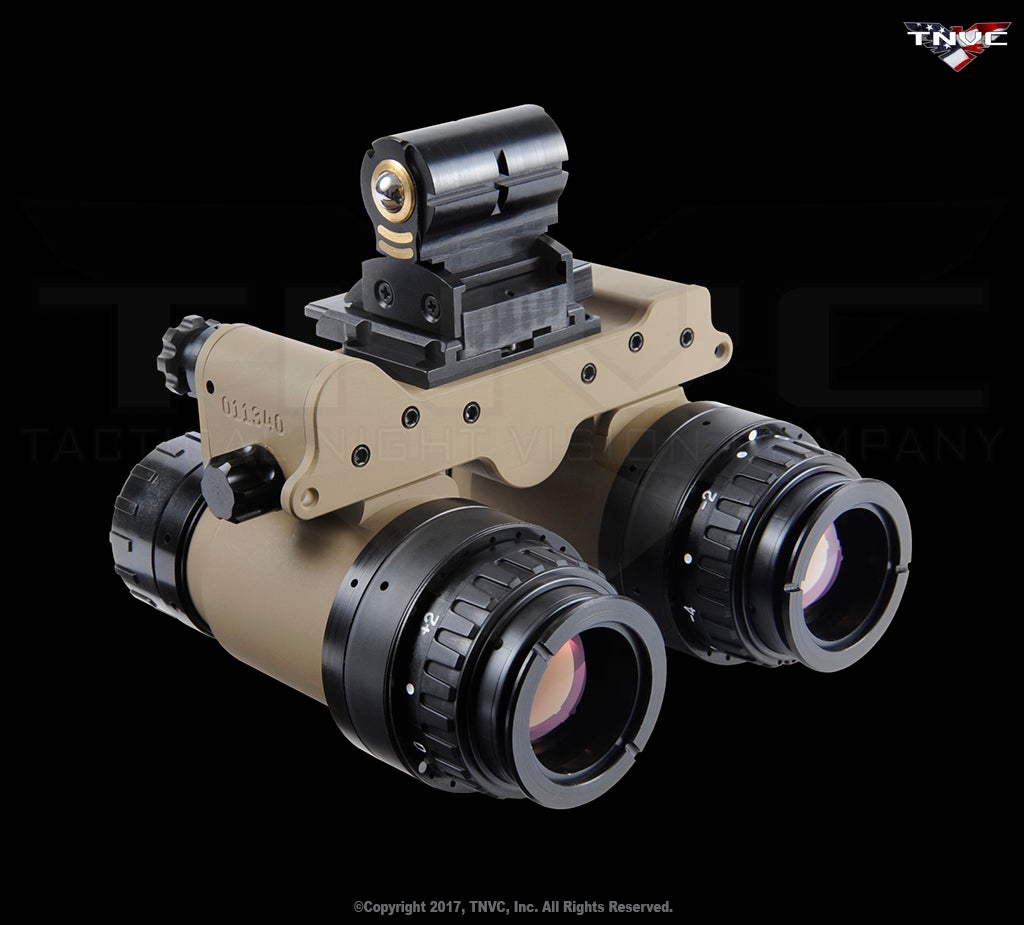
These are the Sentinels. Notice that the housing is durable but does not allow for use as a monocular.
Source: https://tnvc.com/shop/tnv-sentinel-binocular-night-vision-system-l-3-omni-viii/
While sentinels are adjustable for interpupilary distance (the distance between the eyes), they do not allow the user to flip up one side and run as a monocular. Sentinels retail for approximately $7800 to $9000 depending on green or filmless white phosphorous. Prices can also change based on preferred external housing color. Sentinels are available in a black or FDE external housing.
Other units such as the DTNVG are available as well in thin film or filmless white phosphorous options. These range from $8700 to $9900 based on film preference. The benefits of the DTNVG and other similar units, is the ability to fold up a singular monocular. This allows for single monocular use so the user can still utilize standard sighting systems while having the other eye aided by a night vision device.
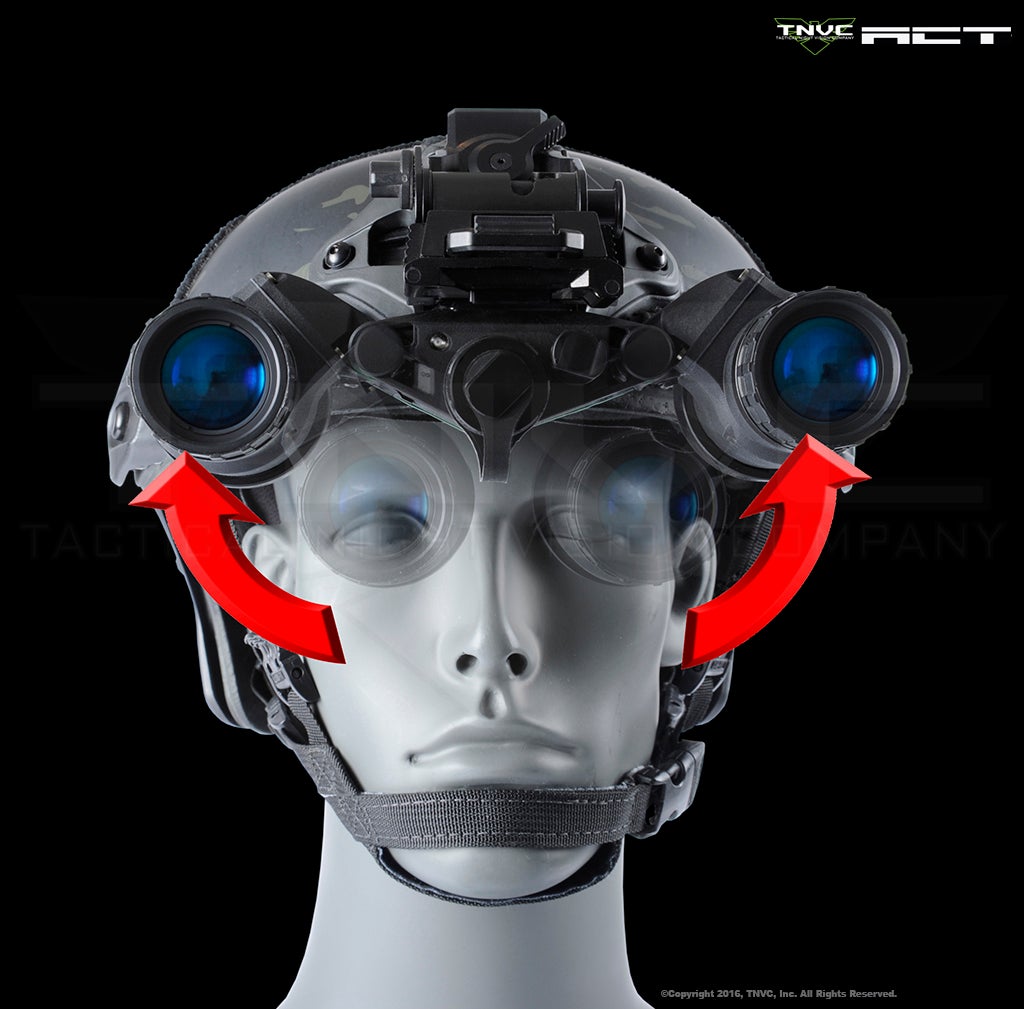
Both sides of the DTNVG system move separately to allow either side to be moved up while the other side performs as a monocular.
Source: https://tnvc.com/shop/tnvdtnvg-dual-tube-night-vision-goggle/
The DTNVG system improves battery life by shutting off each side independently if pivoted. This also prevents a green or white splash of light from appearing on the users helmet when the user pivots up a single side. The DTNVG system also provides for easier stowage by allowing both tubes to rest closer to the helmet when stowed. This repositions the center of gravity and prevents significant neck strain from the weight being farther forward and away from the helmet when the unit is not in use.
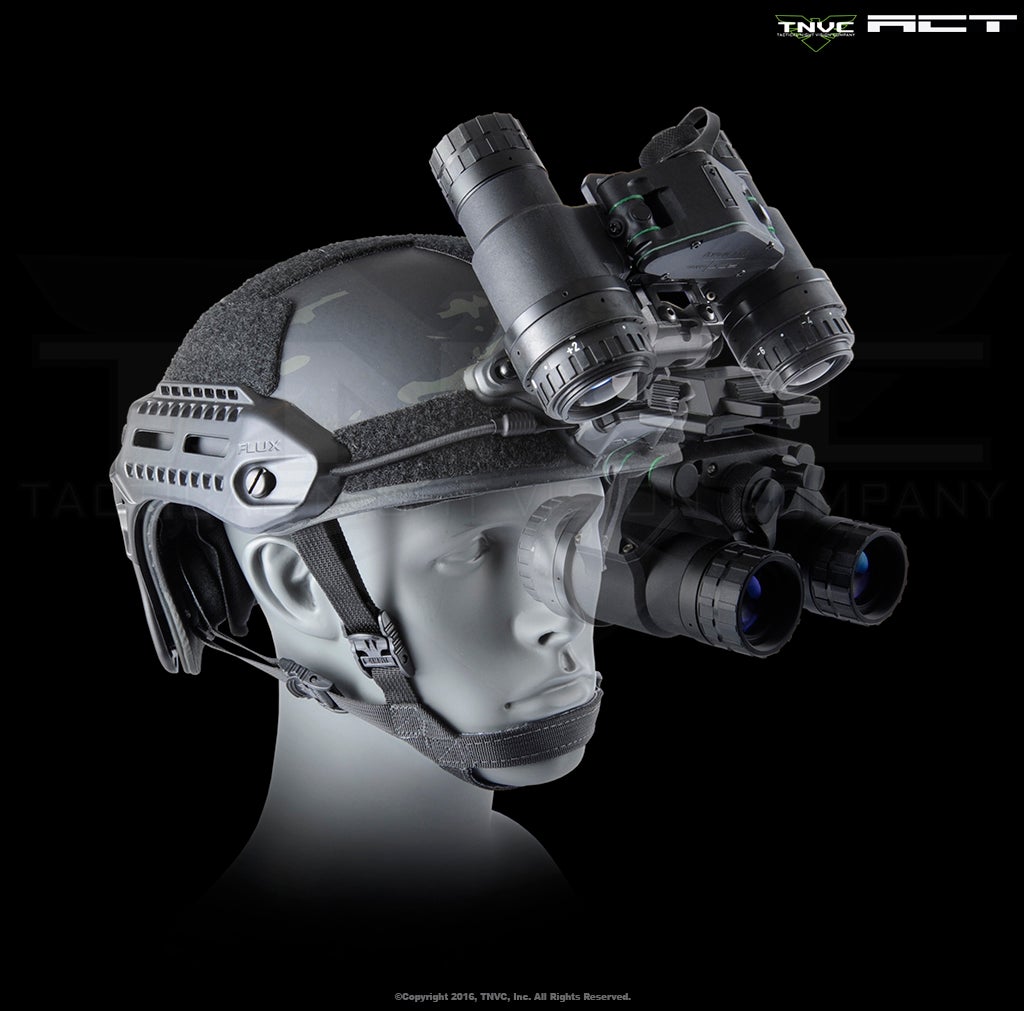
The DTNVG system folds flat back against the helmet.
Source: https://tnvc.com/shop/tnvdtnvg-dual-tube-night-vision-goggle/
While many systems have been put together to convert a PVS-14 to a dual tube, the MOD 3 sets itself apart by allowing for the use of the two tubes together or individually. This provides great versatility as a buyer can utilize a dual tube setup when alone, but also has the opportunity to break the system down and allow 2 users to each run a single monocular. This is also a great option for those wanting to enjoy night vision photography.
The lense has the option of coming standard or C-mount. C-mount enables quick-detach capability to interface with different camera lenses. The MOD 3 Bravo is a special unit assembled by Tactical Night Vision Company (TNVC). These are enhanced as the optic pods are upgraded from polymer to aluminum for increased strength and accept a separate ANVIS Mount Adapter. The adapter allows the system to utilize ANVIS ball-detent mounts and remote battery backs.
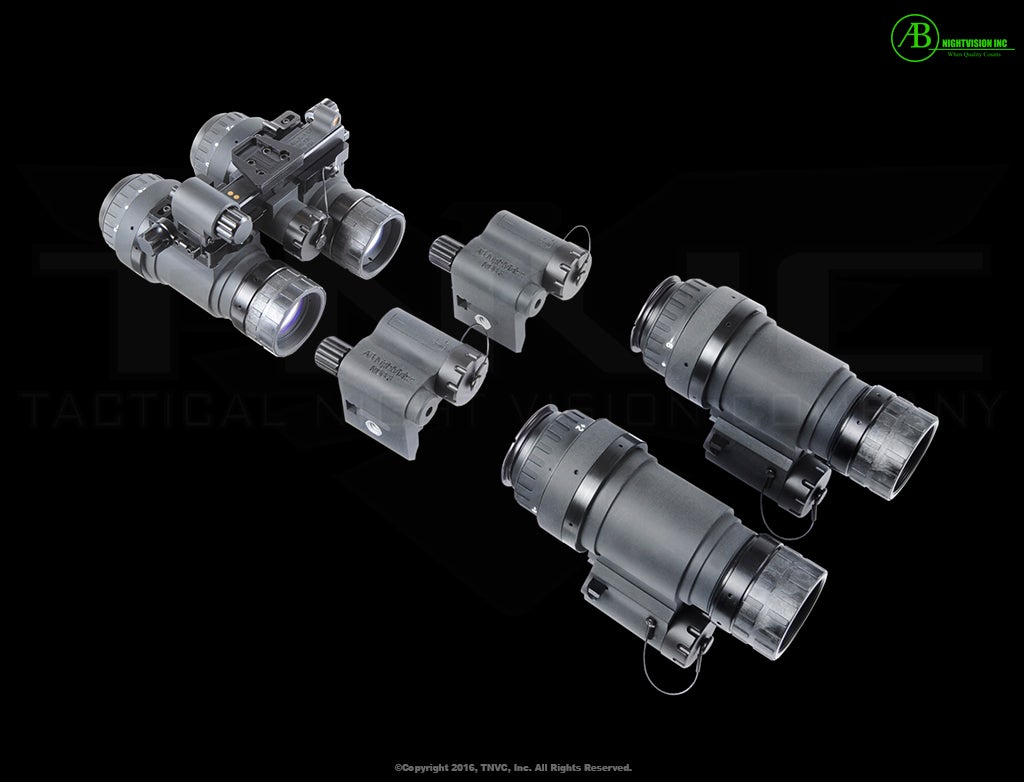
The MOD3’s allow the user to quickly swap from a single to a dual tubes in seconds.
Source: https://tnvc.com/shop/ab-nightvision-mod3-modular-goggle-l-3-omni-viii/
There are many different dual tube setups for night vision. From the PVS-15 and PVS-31 to the BNVD, Sentinels, DTNVG or even the MOD 3. Many of these setups use very similar and utilize the same types of image intensifiers and optics. The user simply has to determine which features specifically meet their needs and budget. Some also have the ability to utilize an external battery source while others run off a single integrated battery.
Conclusion
Due to the price of night vision, many buyers can find buying used night vision very appealing. While there may be some cost savings this very risky. The intensifier is the primary cost of a night vision setup and cannot be identified without taking the night vision device apart. While a tube can be turned on and appear to be a high end filmless white phosphorous L3 intensifier, without taking the unit apart and identifying the intensifier there is no way to ensure the value of the intensifier. This could mean that the intensifier used is actually simply a Russian intensifier, making it a fraction of the assumed value.
Unless the buyer knows the seller well and knows the kit is what they are expecting, it is far better to purchase new or refurbished units from a reputable dealer. This ensures the investment is truly what the buyer is expecting. Tactical Night Vision Company specializes in night vision and offers great products. For harder to find items Will’s Optics also is a reputable dealer. Both companies are willing to help the buyer find the right NOD or accessory for their needs and are extremely knowledgable. Whatever dealer you decide to purchase from, make sure you do your research prior to spending thousands of hard-earned dollars.












 Your Privacy Choices
Your Privacy Choices
